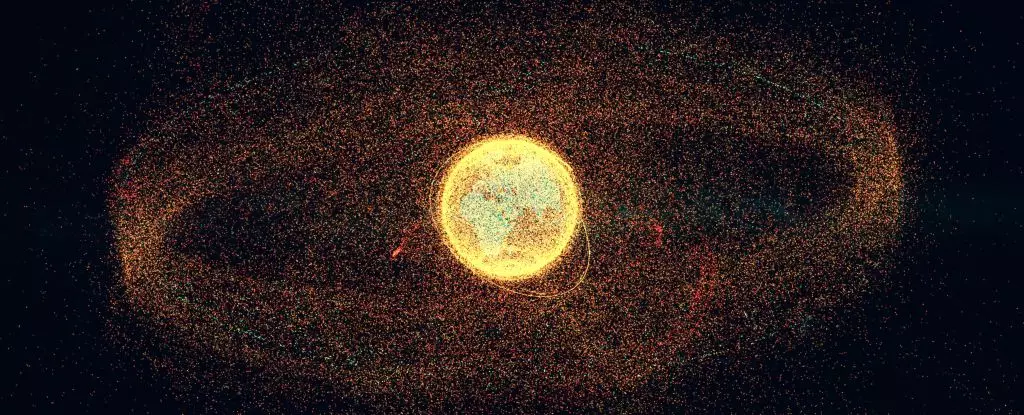The issue of space debris proliferating in Earth’s orbit has reached a crucial tipping point. The European Space Agency (ESA) has voiced its growing concern through its annual Space Environment Report, which indicates a rapid and troubling increase in the debris surrounding our planet. As we endeavor to propel satellites into orbit at an unprecedented pace, the unfortunate reality is that the rate at which these satellites return to Earth is significantly lower. Alarmingly, the proportion of defunct satellites and fragmented remnants of decommissioned spacecraft far exceeds that of operational satellites. This burgeoning mass of debris poses a dire risk of initiating a catastrophic Kessler cascade, where one collision creates a chain reaction, leading to additional debris generation and heightening the chances of further collisions.
While we have not yet hit the critical mass for a full-blown Kessler event, the risk is palpably increasing. It has been scientifically established that the threat of orbital collisions will not simply plateau; it is on an exponential rise. The fragmentation of existing debris is already adding more objects to the orbital environment faster than they can be naturally removed through atmospheric re-entry. The ESA underscores that merely halting new launches is insufficient to ameliorate the situation. Instead, we must adopt active measures for debris removal and remediation.
A Broken System: Launch Rates and Debris Accumulation
For years, experts have identified the unsustainable trajectory of our satellite launch practices. While numerous designs now consider their end-of-life disposal plans, the reality remains that these spacecraft and their components do not vanish overnight; they linger in orbit for years, if not decades. The findings of the 2025 Space Environment Report should serve as a sobering reality check for all involved in space exploration and technology development.
As of now, monitoring systems track approximately 40,000 objects in orbit, differentiated between roughly 11,000 active satellites and a staggering amount of orbital debris. The ESA estimates that up to 54,000 pieces of debris exceeding 10 cm reside in orbit, with about 1.2 million objects measuring between 1 and 10 cm, and an overwhelming 130 million smaller fragments between 1 mm and 1 cm. While initial impressions may downplay this hazard, even the minutest debris can wreak havoc on operational satellites, including critical assets like the International Space Station and the Hubble Space Telescope.
Furthermore, fragmentation risks are not confined to collisions between larger objects. Other fragmentation sources, such as explosive failures during operation and the inevitable wear and tear of older equipment, have proven surprisingly significant. In fact, as of 2024, non-collisional fragmentation events accounted for the most prolific source of newly created debris, generating thousands of new fragments with no reliable means of control or management.
Encouraging Developments Amidst the Crisis
Interestingly, not all news from the space debris front is dire. Efforts towards achieving controlled atmospheric re-entries of spent rocket stages and defunct satellites have seen positive outcomes, with a higher number of these entities returning in a controlled manner in 2024 compared to previous years. The ESA reports that compliance with decay standards has improved, showing promising trends in responsible orbital behavior. Approximately 90% of low-Earth orbit rocket bodies are now being decommissioned in line with re-entry standards established before 2023, and over half are successfully entering the atmosphere in a controlled fashion.
These advancements affirm that although we are mired in a space debris crisis, concerted efforts can yield appreciable benefits. Yet, these are only initial steps, and sustaining these improvements is just one facet of a much broader strategy needed to address the burgeoning debris problem. The global community must unite—nations heavy in space endeavors, private enterprises, and scientific institutions must collaborate effectively to tackle this multifaceted challenge.
The Path Forward: A Unified Approach to Orbital Safety
Solving the space debris dilemma requires revolutionary thinking and international cooperation. As space becomes an increasingly crowded neighborhood, the necessity for adherence to stricter guidelines and innovative solutions rises dramatically. Countries must willingly share monitoring data, develop new technologies for debris removal, and minimize the creation of new orbital junk.
Plans to actively clear space around our planet are not merely beneficial; they are imperative. The urgency of the situation cannot be overstated. With humanity relying on space-based technology like never before, failing to tackle the problem might render significant portions of space—where vital activities occur—unsafe or unusable. The fate of our future endeavors in space exploration hangs in the balance, and proactive, unifying action is essential to ensure that humanity can continue to harness the cosmos without jeopardizing its integrity.

